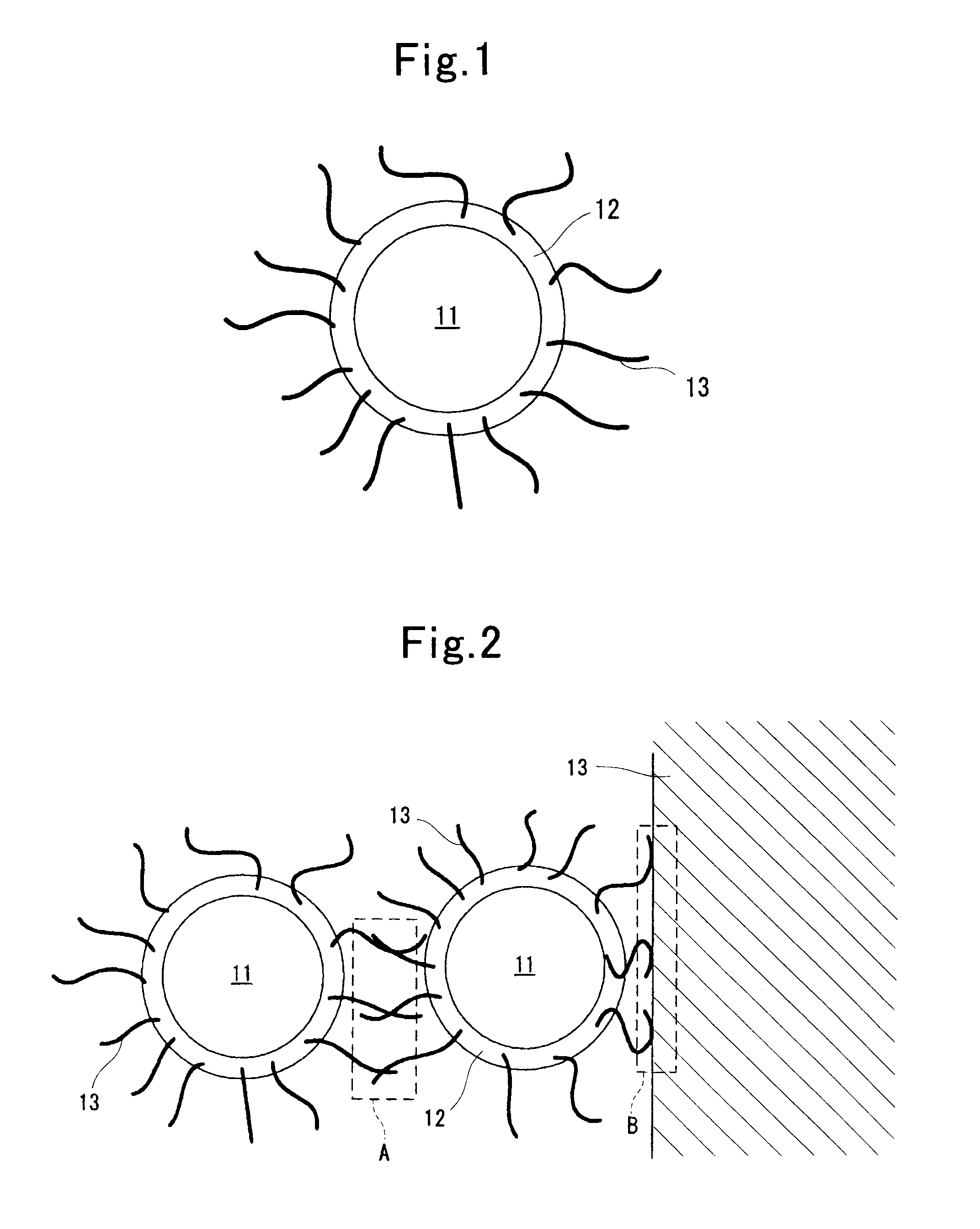Electrode for secondary battery and production process for the same and secondary battery
a production process and battery technology, applied in the direction of cell components, final product manufacturing, sustainable manufacturing/processing, etc., can solve the problems of lowering battery performance, loss of conductivity between active-material particles, so as to secure the conductivity reliably and collect electricity
- Summary
- Abstract
- Description
- Claims
- Application Information
AI Technical Summary
Benefits of technology
Problems solved by technology
Method used
Image
Examples
examples
[0077]Hereinafter, a lithium secondary battery according to the present invention will be explained by means of examples and comparative examples. However, the present invention shall not be limited to the following examples as far as not going beyond its gist. Electrodes, and a battery manufacturing method, in the present invention will specified below. In the respective examples, the following positive electrodes, negative electrodes and separator were put together to make prototype batteries.
example no.1
Example No. 1
Positive Electrode
[0078]A positive-electrode electrode material, which is coated with a conductive material (resulting from carbon black) and to which fibrous conductive materials (resulting from carbon fibers) were bonded, was produced by mixing lithium hydroxide, cobalt oxide, lithium carbonate, carbon black and carbon fibers and then calcining them. That is, an adhering step of adhering the conductive material onto a surface of the active-material powders, and a bonding step of bonding the fibrous conductive materials to that conductive material were carried out by means of this calcination.
[0079]An addition amount of the carbon black was set at such an amount that included the conductive material in an amount of 7.5% by mass when the after-production active-material powders (i.e., lithium cobaltate) were taken as the standard. As for the addition amount of the carbon fibers, they were added so that they made 3 by mass when a mass of the entire electrode material was...
PUM
| Property | Measurement | Unit |
|---|---|---|
| specific surface area | aaaaa | aaaaa |
| length | aaaaa | aaaaa |
| thickness | aaaaa | aaaaa |
Abstract
Description
Claims
Application Information
 Login to View More
Login to View More - R&D
- Intellectual Property
- Life Sciences
- Materials
- Tech Scout
- Unparalleled Data Quality
- Higher Quality Content
- 60% Fewer Hallucinations
Browse by: Latest US Patents, China's latest patents, Technical Efficacy Thesaurus, Application Domain, Technology Topic, Popular Technical Reports.
© 2025 PatSnap. All rights reserved.Legal|Privacy policy|Modern Slavery Act Transparency Statement|Sitemap|About US| Contact US: help@patsnap.com


